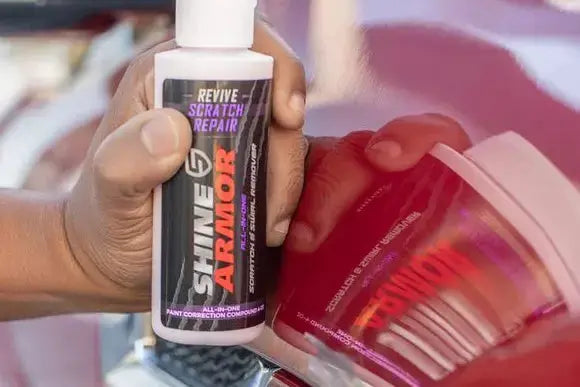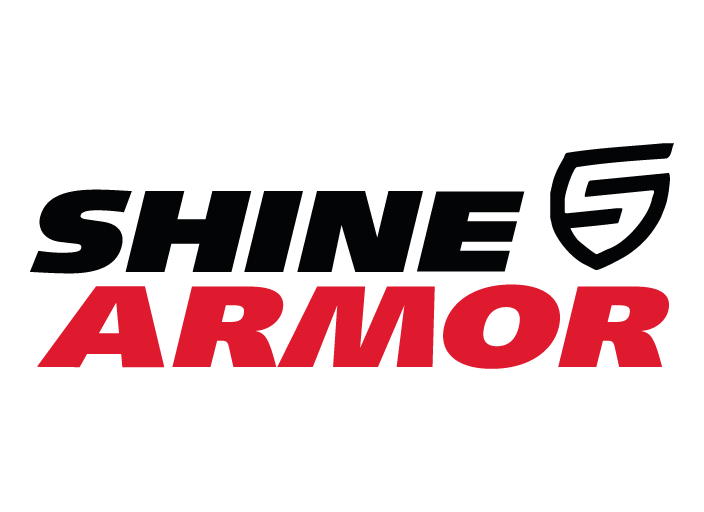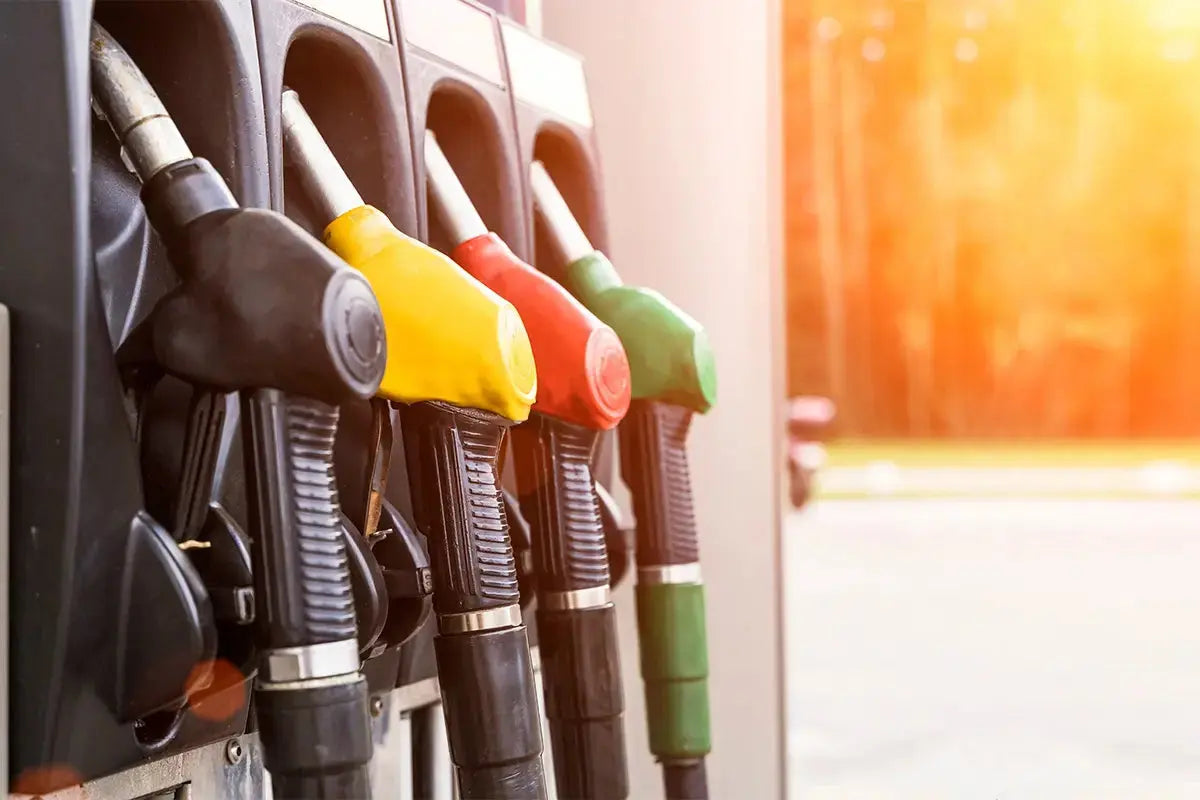
As you look closely at your once-shiny vehicle, you may begin to notice little imperfections here and there. While it’s nothing you would normally notice, now that you have seen it, you notice it all the time. What can you do?
While paint repair can be a growing expense for any vehicle owner, small scratches and imperfections can be corrected by hand at home. That’s right — look down at your hands. Those can be the very hands that perfect your car and take it to the next level.
With the correct knowledge and techniques, you don’t need to be a professional to create a top-notch finish and bring your paint back to life. read this article in shine armor blog.
related products in shine armor:
- Shine Armor Vacuum Cleaner
- Shine Armor Graphene Ceramic Spray
- Spray Wax Quick Coat for Cars
- Performance Booster Oil Additive
- Armor Suds Graphene Shampoo
Why Is My Vehicle Scratched?
While scratches may feel like the end of the world, it’s important to understand that scratches truly are just a part of owning a car, truck, boat, motorcycle, or any other painted vehicle. As you drive down the road, your vehicle takes a real beating from the wind, rocks, pebbles, sand, bugs, and various road debris that are kicked up.
At some point in time, every one of us has decided to stick our hand (or even our head) out of the window to feel the force of the wind as we travel down the road. Something as small as a pebble becomes a danger at highway speeds, and when attempting to maintain a mirror finish, these can cause issues with your paint. With that in mind, don’t feel too surprised to find a few more scratches along the front bumper and hood of your vehicle, as these areas take the majority of the damage.
Another cause of scratches comes from simple human error. We would all love to blame every scratch on our vehicle to those pesky shoppers dinging our doors as we’re in a grocery store parking lot, but the simple reality is that actions such as leaning on your car could cause scratches. Not only do items such as keys become a risk, but even the material of your clothes have the potential to scratch your relatively soft paint.
Dirt buildup on the surfaces worsens this effect as the dirt and debris dig into your paint. This is also why you should never let anyone draw in the dust on your vehicle.
Yeah, we know, “wash me” is just so funny and original.
What happens, though, is the dirt dragging across your surface creates thousands of microscopic scratches that dig away at your protective layers. This is why the next time it rains, even after washing your vehicle, you can still see traces of those dirt drawings.
While scratches may be a normal part of owning a car, we still find ourselves in a constant battle for that deep shining surface. But what exactly are we trying to protect?
Your Vehicle’s Paint
To best prepare yourself for scratch repair and paint protection, it’s important to understand exactly what you’re dealing with.
Your automotive paint starts with a bare metal surface, which is covered in one or more coatings known as fillers or primers. These layers are sanded down to create that smooth surface you expect on your car, and without this step, your vehicle may have imperfections and waves.
Next, manufacturers add multiple layers of color to your car for what is known as the base coat. This base coat involves the color, the shine, and the paint effects you see when you look at your paint. From sparkling metallics to color-changing pearls, these effects create amazing visual effects and are protected by your clear coat.
The clear layer, i.e., the clear coat, is sprayed in multiple layers as well to create a thick protective layer. This clear coat is what takes the abuse and damage as you drive down the road.
With this clear coat being a thick protective layer, it will also be what we work on when correcting for scratches. A majority of scratches will be in the outer layer of clear, allowing them to be filled or gently sanded away.
Shop by category:
- buy exterior products from shine armor
- buy interior products from shine armor
- Buy Best car detailing kit
Scratches
Even if you know scratches are going to happen, you may still feel a bit sick to your stomach every time you come across one. Some days they seem more obvious, while other days you don’t see them at all.
Why Do You See Scratches?
Even if scratches can be tiny, you’ll see them if you look just right. Many people refer to this as looking “in the right light,” which is true because what you're actually seeing when you look at a scratch is light.
The clear coat on your vehicle allows light to pass through, which is why you see the color of your vehicle. When your car becomes scratched, you’re actually seeing where the light is unable to pass through the clear coat and is now bouncing back to you.
With this in mind, be sure to inspect your vehicle during the daylight. Most scratches on your vehicle aren’t visible without light, meaning good lighting is especially important when trying to repair scratches to ensure you’re doing a good job.
Types of Scratches
With so many objects able to scratch the relatively soft layers of paint on your vehicle, it’s important to remember that not all scratches are the same.
For instance, the scratches produced by nuts falling out of a tree during a wind storm will be quite different from the scratches produced by the shopping cart that mysteriously made its way down your door when you were out grocery shopping.
Depending on the depth of the scratch, you may be able to use more gentle approaches to remove the imperfections.
Micro Scratches
When thinking about micro scratches, think about those small scratches that are almost not even visible. These scratches are on the far outer layers of your clear coat and play no real threat to your vehicle's longevity, but that doesn’t mean eliminating them wouldn’t create a deeper shine.
To break this group down even further, think about micro scratches as either swirls or wash lines.
Swirls are common on all non-top-coated surfaces and come from common wear and tear. This could include wiping your vehicle down, or the wind, or even the rain. There is no way to eliminate swirls completely, but you can make them disappear.
Wash lines, or “towel scratches” are very fine straight lines produced from washing or drying your vehicle. They are a bit thicker than swirls but still nearly unnoticed without the proper lighting.
Shallow Scratches
When talking about shallow scratches, we are referring to scratches just within the outer surface of the clear. These scratches are relatively simple to correct and are often the result of standard wear and tear.
Fingernail Test
To test if a scratch is actually shallow, consider trying the “fingernail test.” As your clear coat is between .00015 and .0002 inches thick, a shallow scratch really is just at the top. Take your fingernail and slide it across the top of the scratch and see if your nail gets snagged.
You may just barely feel it, but that’s not the concern. Make sure you don’t snag on the scratch or cause that clicking sound.
Deep Scratches
When doing the fingernail test, if your nail does catch on the scratch, you may be dealing with a deep scratch. When dealing with deep scratches, it’s important to determine how deep the scratch is.
Get your vehicle into good lighting and clean the area. Begin to take a deep look at the area, looking for color differences to determine just how deep the scratch really is. If you see a shiny metallic surface, this could mean the scratch goes through your clear coat, through your base coat, and is digging into the metal. If you notice a color similar to your base, the scratch may have dug through your clear completely.
You may also look at the scratch more from the side. In many cases, a close eye can see just how deep a scratch has gone. Keep in mind that your clear is half the thickness of a piece of paper, so this isn’t always the easiest method.
Methods To Repair Scratches
No matter how deep a scratch may be, with the proper work, even a novice can bring their scratched surface to a like-new shine. Scratch repair should be done with fair precaution, as large mistakes could result in even more costly damage. But if you follow the proper steps, you’ll be able to safely repair your scratched vehicle.
It’s important to remember that these steps are focused on scratched surfaces. Be sure that your paint isn’t beginning to lift or flake, as these steps take a steady hand and a bit more time.
No matter which method of scratch repair you’re using, you will be working the entire area to create what's known as “feathering.” If you were to work just the scratch, you would be able to see the indent from removing material. Think of your paint as a kitchen table: you want to lay your hand flat and work in circular motions to ensure it’s evenly clean.
While these scratch repairs are organized by scratch depth, you will always want to start at the deepest marks and work your way back up the scratches. For example, if you have a shallow scratch, you will want to repair the shallow scratch and then treat it as if it was a micro scratch to perfect the surface.
Repairing Micro Scratches
It’s worthwhile to keep in mind that micro scratches are a common occurrence that appear from daily use. This means that while you may fix them now, over time, they will show up again.
Polishes
When dealing with wash lines or towel scratches, you may find that polishes are needed to better perfect your surface. Polishes have an extremely fine abrasive within the liquid that removes paint swirls, micro scratches, and minor surface contaminants such as oxidation and water spots.
When dealing with polishes, it’s always worth considering a high-end polish since polishing can be time-consuming, and you don’t want to waste your time fighting with a product that doesn’t match your expectations. You also want to follow the manufacturer’s guidelines to get the best result, since each formula is a bit different.
For some polishes, you will apply them by hand using applicator pads. These are small foam pads designed to hold but not absorb the polish. It’s important to apply flat pressure to work the area evenly. You may also find yourself using an electric polisher, which can speed up the job greatly.
Whenever using an electric polisher, you must keep the pad moist with polish and be sure to not overwork or overheat the area. Running an electric polisher does take some practice and should be used with relative caution as to not ruin your paint, as painting a car can be costly.
Polishing is where up to 95% of your top shine comes from since it finishes the surface of your clear coat. While it’s important, many people find the importance of top coats to be unmatched.
Top Coats
You should also consider the various top coats as a great way to “remove” micro scratches.
Ok, it’s true; top coats don’t technically remove the scratches. If you remember from How To Wash Your Car The Right Way, paint at a microscopic level is actually quite imperfect and rough.
Top coats fill both the scratches and the imperfect texture at a microscopic level to create a mirror-perfect finish that not only visually removes the imperfection but also adds a protective layer over your entire painted surface to battle against future damage. For many drivers, this is a final step often added at the end of a deep wash or detail due to the appealing look and added protection.
It’s important to use a high-quality microfiber towel throughout this process, as it pulls dirt and excess coating away from the paint to reduce the risk of scratching.
Wax
Although the idea of waxes dates back to before 1800, the development of automotive waxes has continued to improve throughout recent years.
The idea is simple: add a soft clear compound to your vehicle, which not only fills and reduces the visibility of micro scratches but also adds a soft layer over your painted surface.
This soft layer can then act as a pillow for small rocks and other small debris common with driving. Once this wax gets dirty, it can be removed with relatively harsh soaps and warm water or automotive wax strippers. Be sure to follow the manufacturer’s instructions, as some wax is meant to be applied and instantly wiped off, while others are intended to dry before being wiped off.
Ceramic
Until 2010, various formulas of wax or wax-like products were the only route to protecting your paint, until the introduction of ceramic coatings.
Ceramic coatings work by filling the imperfections in your paint, similar to waxes but with a hardened top surface. This means your paint will have an added layer of protection that is easy to clean as all contaminants stay on top of the coating.
While wax coatings are known to be efficient for 3 to 6 weeks, as they are washed off and reapplied, ceramic coatings are known to last 2 to 5 years, meaning less time cleaning and more time driving. They are highly hydrophobic, meaning water will simply run off your vehicle, pulling away much of the dirt with it. More importantly, ceramic coatings are acid resistant, meaning this coating will protect your paint from things like tree sap and bird poop, which are known to damage paint due to the high acidity.
The downfall with waxes and ceramic coatings alike becomes how time intensive they are to apply.
Spray On Coatings
With time being a factor for many vehicle owners, spray on coatings have continued to grow in demand, from spray waxes to spray ceramics. Spray coatings focus on thinner layers of the previously discussed applied coatings, with a quick spray on wipe off the access application.
Often referred to as shine-and-show or spritz-and-shine, these sprays have remained a popular option for show cars, used as a final clean up to add a deep shine when it matters.
While these coatings may not give you as deep a protection, they are intended to be applied either directly to the painted surface or over the applied coatings. This means once your vehicle is coated with a ceramic, for example, a spray ceramic could also be applied for added shine and protection, lasting just a few months. It could be reapplied periodically to fill in imperfections along the way.
While these coatings are relatively new to the market, the outcome and ease of use have remained a draw for daily drivers and car shows alike.
Methods For Shallow Scratches
When dealing with scratches within the outer layers of your clear, it’s important to keep a fair amount of caution and care in your mind. While your clear is painted in multiple layers, it still only makes up about half the thickness of a sheet of paper.
Cutting Compound
You may be inclined to grab a product you are already familiar with, such as polish. Will it work?
Polish works great for micro scratches, but in most cases, they don’t remove enough material to work with shallow scratches, especially when keeping in mind you would work the entire area. You may want to still use a similar product with a bit more bite, which is known as a cutting compound.
Cutting compounds work similarly to polishes, as they slowly remove layers of clear from your vehicle. It does remove the clear layers quicker and should be used with caution as to not take away too much.
Cutting compound can be applied either by hand or with a specific pad on an electric polisher. Keep the previously discussed cautions in mind if using an electric polisher. Be sure to use a cutting pad on the polisher, and never mix or use different compounds on the same pad.
This is a great option for mild shallow scratches, but for more severe scratches, you may have to choose wet sanding.
Wet Sanding
Yeah, you read that correctly, it may be time to take sandpaper to your beautiful paint.
Wet sanding is done as one of the final steps in painting a car and comes with its fair share of risks. You should consider this the more aggressive approach to scratch correction intended for mild shallow scratches when the cutting compound just won’t cut it. This is often focused on areas of damage, and not individual scratches, as you will need to sand the entire area to create a uniform finish.
Do not use any product not labeled as wet sandpaper, and focus on quality automotive products. If you try to use standard sandpaper, the water will break down the adhesive and the grit will begin falling off or clumping up, which could actually cause even more scratches.
First, you must ask yourself how much clear coat do you have to work with. The simple reality is that not every vehicle can be wet sanded, especially if the clear is too thin. Once a vehicle has been wet sanded one or two times, you may not have enough clear coat to continue, which could require the clear coat to be repainted.
Typically, when sanding scratches, you want to focus on using 2000 to 3000 grit wet sandpaper. While 1500 to 2000 are often used for major corrections, these lower numbers are actually more aggressive and may take too much. The sandpaper grit rating focuses on the number of particles per square inch but does not state how aggressive or precise the small grit will be. While this isn’t an issue for wood, this is the reason we encourage using an automotive-specific product.
When sanding on a flat surface, you don’t want to use the sandpaper directly in your hand, as your fingers may cause differences in pressure. Professionals use some variation of wet sanding blocks often made of rubber, foam, or similar material that that sandpaper wraps around. The design of the block is to be flexible enough to follow the curve of your vehicle's panel, while the main surface gives enough support for even pressure.
You will need a reasonably sized wet sanding block, wet sandpaper between 2000 and 3000 grit, and a container of water with a few drops of soap.
Keeping the sandpaper wet reduces the amount of bite from grit, reducing the possibility of the sandpaper digging in or balling the clear being removed. The added soap adds to this lubrication and further reduces the risk of scratches.
Keep the paper wet. Prior to starting, set your sandpaper in the water for around 5 minutes. This will ensure water soaks into the grit completely. Add a reasonable amount of water to the area, and dip the sandpaper every couple of minutes. This not only keeps everything lubricated but also rinses the sandpaper of buildups. Water is your friend.
Once you have determined you have enough clear coat to wet sand, often checked visually, begin gently working the area. One method is the circle method, where you sand in constantly moving, constantly overlapping circles. This constant changing of direction helps reduce the risk of creating small ledges or other imperfections.
The second method is the four direction method, where you will sand left to right, up and down, and at 45 degrees in each direction across the entire panel. These changes in directions also help avoid inconsistencies or differences in material removed.
Using a harsh technique like wet sanding may leave you with a dull surface, and you should work your way back through the cutting compound and polish steps to bring your surface back to a shine.
Clear Fillers
Maybe you have one singular scratch, and wet sanding an entire area just simply isn’t the solution you wanted. Companies have developed clear fillers, known as touch-up pens, scratch pens, or clearcoat pens.
These easy to use fillers are a great option to add material instead of just focusing on sanding your clear away.
Of course, we are talking about clear filler pens specifically, so be sure not to choose the “color match” pens found at many automotive stores, as those are colored. A clear filler pen works by adding a thin layer of clear coat paint into the scratch, applying multiple layers if needed until your scratch is no more.
While the instructions often say to just apply and the scratch disappears, we encourage you to take one extra step and finish the area with a polish. Adding the clearcoat pen will often raise the edge, and the polish will remove some of that raised imperfection.
It’s also important to keep in mind the temporary scratch correctors such as ceramic, which are primarily known to fill minor imperfections in a painted surface. These can also be applied over any scratch, and they are known to help with correction. For many owners, the use of applied ceramics, with the addition of periodic ceramic sprays, have remained a simple go-to for their vehicles.
Deep Scratches
Deep scratches can become more of a concern for repair. These scratches often catch on your nail during the fingernail test, and you will be looking for discoloration, such as the base color or even metal.
You should take the time to really try to see how deep these scratches are to determine how you would like to repair them and what the potential outcome could be.
Within the Clear
Although the scratch is deep, it may still be just within the clear coat. If the paint is within the clearcoat, you don’t necessarily want to begin sanding away in attempts to get to the depth.
The previously discussed clear fillers become a great option to add clear material back into your surface, adding multiple layers and allowing it to dry in between. In many cases, with large scratch repair, you want to follow filler with a cutting compound and polish to finish the surface and bring back that shine.
Within The Base
Whenever you have a scratch into either your base color or your base metal, you need to take care of the issue sooner than later. Your clear coat acts as a protective layer for your vehicle from water, dirt, the Sun’s UV rays, and if you live in a cold area, even road salt. Without this protective layer, your vehicle’s paint could begin to flake, lift, fade, or even begin forming rust.
The first step is determining if the scratch is within your base color or if it has reached the metal.
Next, you will need to decide your intended outcome.
The simple reality is that if the scratch is within the base coat or to the metal, without major repair such as having the area repainted, you will most likely not be able to get a perfect finish. With that being said, most people are happy with minor imperfections, and the outcomes are almost never noticed.
If the scratch is within the base coat of paint, you can fill the top with a clear touch-up pen similar to scratches within the clear coat. Visually you may be able to see the minor imperfection, but your paint will remain perfect, and depending on the size of the scratch, it may remain overlooked.
If the scratch is down into the metal, consider using one of the paint match colored correction pens in the scratch. At that point, slightly wet sand the edges to remove any color that could be on top of the scratch. Then return with a clear touch-up pen to fill the scratch flush, and finish with a cutting compound or polish.
Again, while these will improve the look of the scratch, they may still reveal imperfection. For perfect finishes, consider contacting a local body shop and ask about paint repair.
The Importance of Paint Protection
Regardless of how deep your scratch is, you’ll always want to work your way back to the top. Even for deep scratches, you will focus on repairing the scratch, followed by treating the panel with polish to bring everything to a universal shine.
With scratch repair, or simply a car wash, the importance of paint protection is irreplaceable.
If you’re a fan of automotive waxes, you should take the time once every 3 to 6 months to re-apply an application wax coating on your vehicle, followed by periodic wax sprays to help keep a clean, fresh layer of protection over time.
If you’re a fan of ceramic coatings, these re-applications are made every 2 to 5 years, which should be followed by periodic ceramic sprays every 3 to 5 months. These coatings cost a bit more than wax, but the longevity and added protection against acidic contaminants create a worthwhile value.
Paint Protectant Vinyl
Paint protectant vinyl, also referred to as PPV, is a clear film added over your vehicle paint to protect it against chips and scratches. These vinyls are commonly used on high wear areas, such as the front bumpers or near the wheels wells where rocks are common.
These films are extremely easy to apply and can be done on any smooth surface.
While these clear films are easy to install, they do come with their own issues. To start, they can’t be detailed like your painted surfaces. Once they are scratched, they are scratched. They also have a tendency to lift over time and begin peeling.
Summary
While scratches are a standard part of driving your vehicle, they are far from appealing. With a bit of patience and understanding, any car owner can correct the scratches and minor damages found on their paint.
Focus on the scratches, and then polish and finish the entire surface. Once your surfaces are brought to a near-perfect finish, protect your paint for a deeper added shine and increased longevity.
It’s time for you to take control of your vehicle's paint and create that professional-grade shine from your own home.
Sources
https://www.autobodyrepairtx.net/blog/how-do-cars-commonly-get-scratched.php
https://www.carwow.co.uk/guides/glossary/car-paint-types-guide
https://www.mysynchrony.com/resources/fix-scratches-on-car.html





